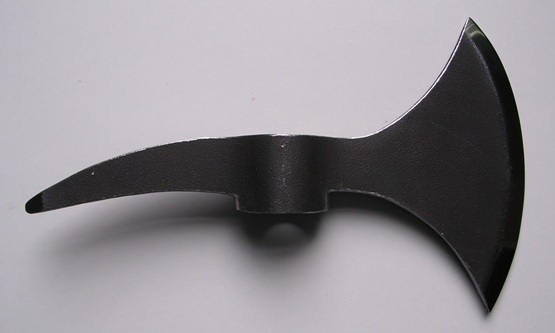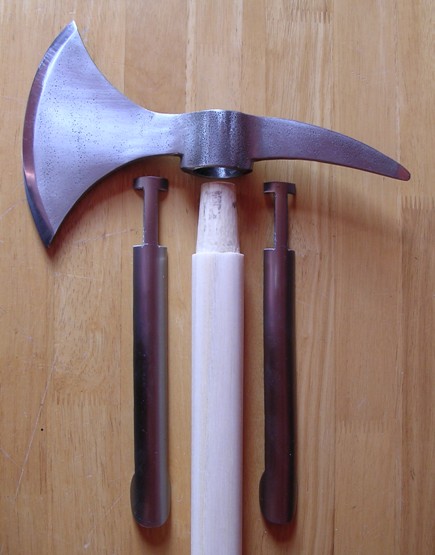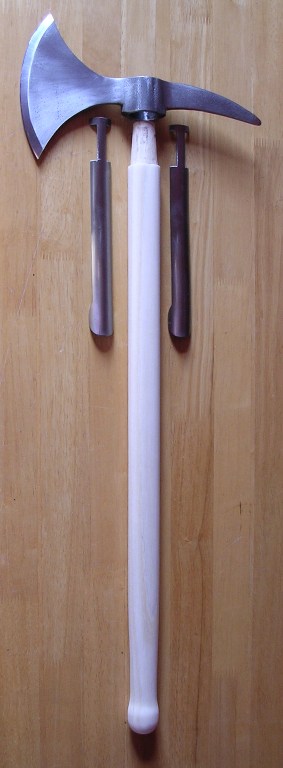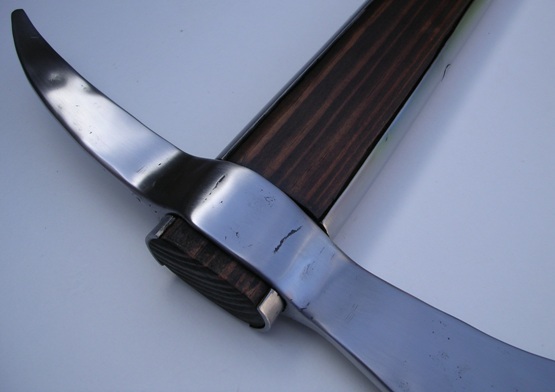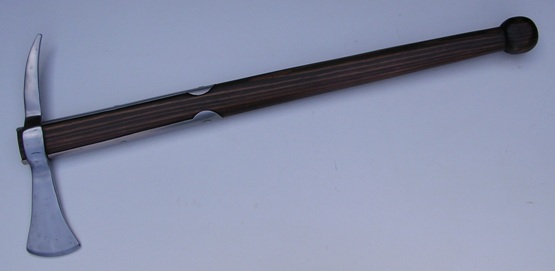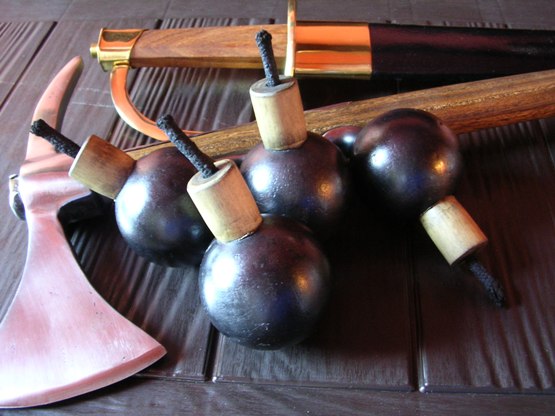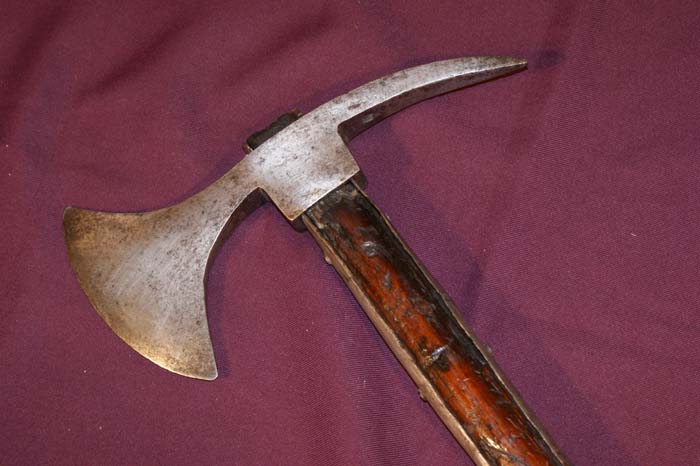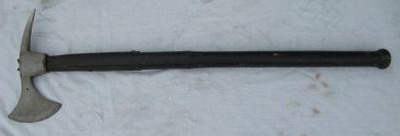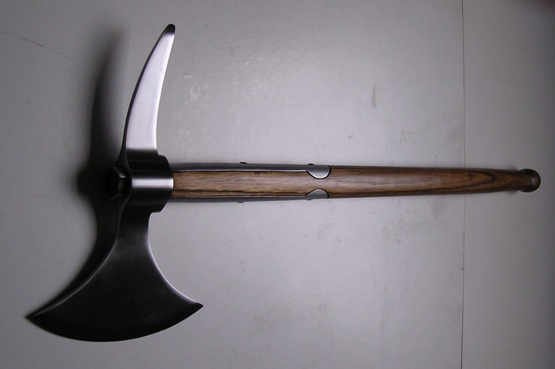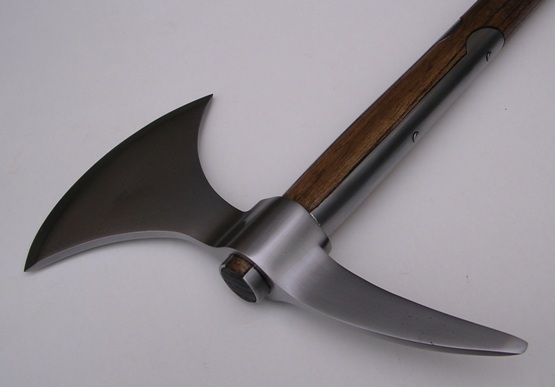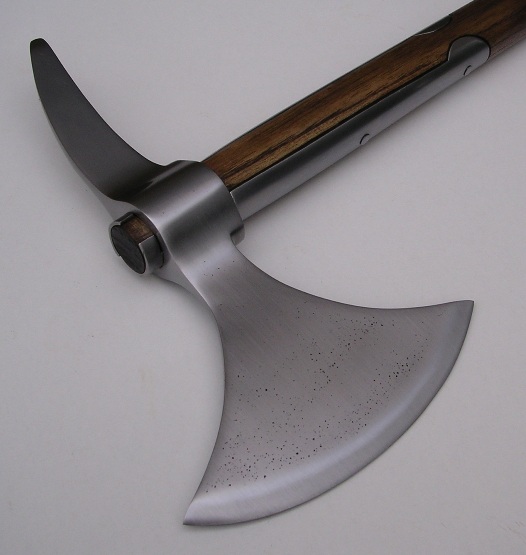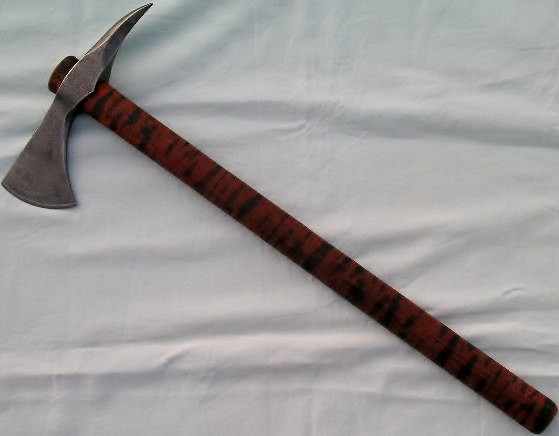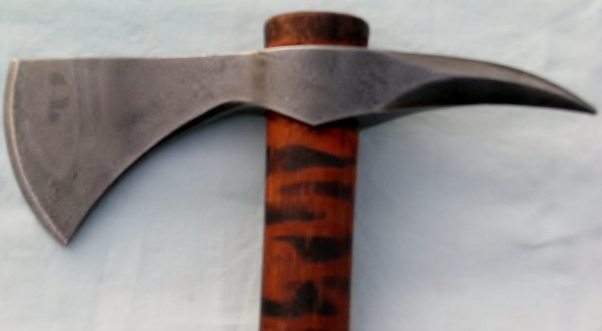It started out as one of those camp, Conan-esque Hanwei Hero's Axe - the unlikely fantasy double-headed ones - which turned out to be very good steel with a lovely ring to it and really well tempered. A bit of severe grinder work (carefully done, so as not to heat it up too much) and it was cut to a more appropriate shape. I still need to finish the polishing to get it down to matt steel, but I'm almost there.
I made the spoon-ended langets from 16 gauge half-round mild steel stock. The 28" English ash haft is one of my stash of cricket stumps, suitably shaped and sanded.
I still need to inlet the langets into the haft, stain and oil the wood, then put it all together (and through rivet/peen the langets to the woodwork) once the head is polished.
I'll post pics when it's all done (can't say when that will be.....).
Enjoy, and be inspired,
Julian
